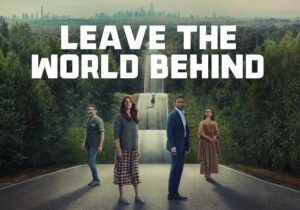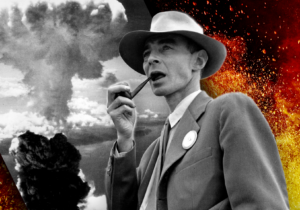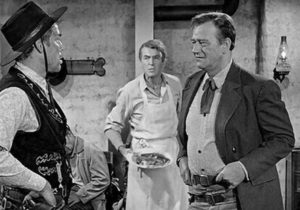as though it were the artist’s
duty to create
hope, but out of what? what?
Louise Glück, from “October,” Averno
In Asteroid City, Wes Anderson has delivered possibly the most ambitious film of his career, broader in scope and loftier in aspiration than all his previous creations. In its relatively concise running time, the film parabolically explores the roles of art, science, religion, and civil society in constructing civilization. While the director has explored some of these subjects before—civil society and totalitarian politics (Isle of Dogs), the creative power and toll of art (The Royal Tenenbaums)—he has never distilled so much life and thought into one single film.
The achievement is truly remarkable, even if the complexity of the endeavor risks tempering the emotional impact. Ultimately, nimble editing punctuates key moments, providing just enough emotion and intellectual engagement, all delivered by a carefully calibrated cast, as they balance as if on the knife edge of wit and sincerity, despair and hope.
The film is fundamentally about art. It immerses us in a mid-twentieth century New York production of a play set in the fictional Asteroid City, somewhere in the “California/Nevada/Arizona desert” in 1955. The play itself centers around a scientific awards ceremony, jointly sponsored by military and industry, held on “Asteroid Day” (September 23) that draws precocious child inventors and their families from across the country. The action within the play soon feels more real than the machinations of the production itself. But the audience is repeatedly reminded that this is a constructed reality, one in which the audience participates, suspending disbelief, empathizing with the characters, questioning the nature of artistic creation and the universe, interpreting primary and secondary reality.
Here, art offers an almost overwhelming power to bind people together in common creative endeavor. It creates harmony. It causes motivation. It encourages empathy. It institutes order, bringing consonance, even while allowing controlled dissonance. This perceived power of art has long been observed, extending back to the chorus in Greek tragedy and Confucius’s commentary on poetry (see, e.g., Analects 17.9). One thinks of the famous saying attributed to Andrew Fletcher, “Give me the making of a people’s songs, and I care not who makes its laws.”
Thus, the film optimistically conveys a sense that if only we can find a way to participate artistically in the creation of society as a beautiful work of art together, then we will all flourish together. In keeping with this theme, it is the young journalist within the play who engages in civil disobedience, liberating others from truth-suppressing martial law. And it is through the rehearsal of movie scenes with the actress Midge Campbell (Scarlett Johansson) that the war photographer Augie Steenbeck (Jason Schwartzman) receives hope again. Art has a power to create, or recreate.
But art has its limits in the film too. When the lead actor in the play breaks from the action and tells the director (Adrien Brody) he feels lost and doesn’t understand the play, the director provides no ultimate answer. “Doesn’t matter. Just keep telling the story. You’re doing him right,” he says. He offers no deus ex machina. Likewise, like all art, the stories within the story ultimately end. The playwright dies. Actors and audiences disperse. Something more is necessary.
As with art, the film examines the role and limits of science as well. The Junior Stargazers/Space Cadets are portrayed as scientific geniuses, inventing new technology that’s quickly appropriated, intellectual property and all, by the military-industrial complex. They are at the frontiers of scientific knowledge. By definition then, they are at the edge of the unknown. Scientific questions may prompt progress, but they lead to an infinite regress of further scientific questions. Among the many science-related questions posed by the play within the film: Who should own new scientific technology? What limits should constrain it? Who gets to decide? What are the chances that (sentient) extraterrestrial life exists in the universe? If such life exists, what might it be like? Would it seek us, as we seek it? What would happen if it did? “Nobody knows,” is the repeated answer, in the film, to some of these questions.
The limits of science generate part of the drama. As the film suggests, science bestows power, which corrupts and must be controlled in some way. The celebrated new scientific inventions in the story are dangerous, possessing military or other risky applications. Science itself provides no answer as to how such technology may be used. Answers come from outside the scope of science. In the film, the government seeks to use and control the new inventions, but the conscientious citizen-inventors seek to reassert control and limit that use. Another instance of civil, or artistic/religious, disobedience in the story.
Finally, Asteroid City also explores the inevitable role of religion in society. The story wraps us in beautiful, benign, light-filled southwest landscapes, with only a thin membrane, seemingly, between heaven and earth. The film can be considered, in part, a first contact film, or even perhaps a heavenly contact film, in multiple senses. Thus, the title invokes actual contact between the heavens and the earth. The play within the film is said to be about “infinity.” It revolves around “a bewildering and bedazzling celestial mystery.” Much of this suggests a quest for meaning and significance and origin beyond the confines of science. Questions are asked which science cannot answer. Existential questions achieve immanence, fueled by the death and burial of the mother in the play and the death of the playwright. The Episcopalian faith, held by certain characters, is mentioned repeatedly. Atheism, too, is mentioned. Events apparently lead one character to question and lose this faith. Yet arguably it is the pivotal role of ethics and religion in the film, as opposed to science, that makes resistance against unjust power possible. The transcendental, heavenly-contact-aspiring, self-evident human dignity of philosophy and religion seems to play an inevitable role, one worth protecting for inherent human freedom and flourishing.
It is the climax of the film that most dramatically suggests a fundamental role of religion for the story. Near the end, the playwright workshops a surreal (possibly unrealized or apocryphal) scene with actors in a theater company, asking them to imagine they fall asleep but go on to experience some sort of awakening. “I’d like to make a scene where all my characters are each gently, privately seduced into the deepest, dreamiest slumber of their lives as a result of their shared experience of a bewildering and bedazzling celestial mystery, but I don’t know how to write it.” This leads to a cryptic, provocative refrain, almost a mantra, repeated over and over by the actors: “You can’t wake up if you don’t fall asleep.”
What can this mean? While the metaphor here of falling asleep and waking up may involve art and science, to an extent, it seems to go beyond the roles of art and science in the film. Awakening has philosophical and religious overtones. And while sleep could be compared to the restorative experience of art, it can also refer to death (and an awakening to the afterlife) or to the religious idea of Sabbath or Shabbot, a temporary separation from conformity to busyness and society that allows one to see more clearly.
There is a certain open-endedness here though. Would such an awakening disjunctive experience in mid-century America lead to a belief in the absence of God and religion? Conversely, would an awakening disjunctive experience in a 21st century secular society lead to a belief in God or some similar religious truth? (Presumably though, one’s experience wouldn’t have to be reactionary in either setting.) Either way, critical aspects of the film assert the essential freedom of the audience to reach its own religious conclusions.
Ultimately, Asteroid City deftly explores the empathic power of art, the questioning frontiers of science, and the philosophical necessity of religion, while revealing the limited and humble domain of each. In doing so, Anderson shows how acutely our disciplines and our lives need one another. And he seems to suggest that only the gravity of human dignity and love can facilitate the harmony of art, the quest for science, and the freedom of religion as antidote to the ever-increasing forces of fragmentation in the modern, or postmodern, world. The source of these transcendent values, however, remains in the story an open question. In that sense, while the film may succeed in sparking a quest for infinity, the final goal of the film remains ever beyond its reach.
stained glass glow
the hymn of love falls
and flows through us
Enchanted Garden Haiku Journal, April 2023.







